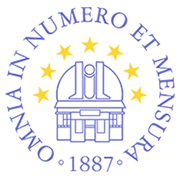

Research unit (RU) for Space Research and Technologies follows the development and trends in space research and new technologies, especially in the domain of the space industry (satellite development sector). Important aspects are the integration of technological development and cooperation with the economy in Serbia, the development of projects with international partners and the development of new innovative solutions, both scientific and technological in the field of space industry and application. The main goal of this RU for the next 3 years is to work on a project called MOZAIK, which concerns the development of the first Serbian scientific satellite of small dimensions (better known as CubeSat, which is a class of nano satellites). The production of satellites here in Serbia will enable the first necessary steps for our country to join the group of 106 countries in the world that already have a developed space program or space agencies. This undertaking is multidisciplinary in nature and requires expertise in several areas:
- Astronomy and mathematics, to determine the orbit of the satellite and all dynamical parameters, as well as the scientific goal of this mission, and development of software for managing the satellite;
- Mechanical engineering, for determining mechanical and thermal characteristics, development and testing instruments, machine assemblies and satellite integration;
- Electrical engineering, for the development and testing of telecommunication, navigation and scientific devices on the satellite part of the system and corresponding ground elements.
The illustration „CubeSat at a glance“
The illustration "CubeSat at a glance" is divided into four charts and shows what is a CubeSat.
First chart: A CubeSat is a miniature satellite that can be made of one or more units, where one unit is cube-shaped satellite. CubeSat belongs to the group called nano satellites (all satellites smaller than 10 kg). The dimensions of a CubeSat are illustrated. It is 10 centimeters on each side, making it similar in size to a Rubik's cube. Graphic shows that a CubeSat can be used alone, or a maximum of 24 CubeSats can be stacked. The size depends on the instruments that CubeSat carries to the orbit.
Second chart: The advantages of a CubeSat are as follows:
- built rapidly (within 24-36 months)
- simple to design
- no space debris generated (they burn up in the atmosphere upon reentry)
- low cost
Third chart: CubeSats are mainly used for 4 types of missions: technology demonstration, scientific research, educational project, and commercial.
Fourth chart: For comparative purposes, a graphic shows the orbits of various objects in the atmosphere and in space. There is an airplane at 10 kilometers above the Earth, a stratospheric balloon between 10 kilometers and 50 kilometers above the Earth, a meteorite at 100 kilometers above the Earth, and the International Space Station and a CubeSat at 400 kilometers above the Earth.
Members and associates:
Members of this research unit from the Astronomical Observatory are:
- Dr. Milan Stojanović (PI), research associate
- Prof. Dr. Luka Č. Popović, principal research fellow
- Dr. Milan Ćirković, principal research fellow
- B.Sc. Eng. Igor Planjanin, junior research assistant
- Prof. Dr. Dušan Marcheta, Faculty of Mathematics, University of Belgrade
- Prof. Dr. Jelena Svorcan, Faculty of Mechanical Engineering, University of Belgrade
- Prof. Dr. Đorđe Čantrak, Faculty of Mechanical Engineering, University of Belgrade
- Prof. Dr. Aleksandar Nešković, Faculty of Electrical Engineering, University of Belgrade
- Prof. Dr. Vesna Blagojević, Faculty of Electrical Engineering, University of Belgrade
- M.Sc. Eng. Ivan Kokić, Research and Development Advisor, Institute Mihailo Pupin, Belgrade
- B.Sc. Eng. Igor Stojković, European Space Agency, Principal Engineer (retired)



